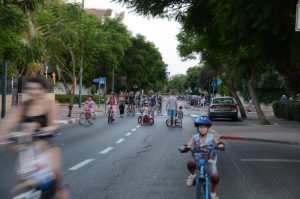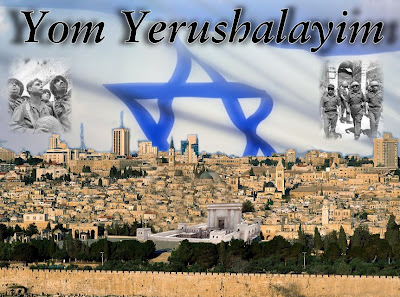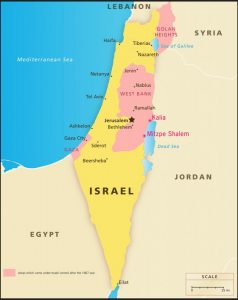 Here in Jerusalem, summers are hard to bear. Some 2,200 feet above sea level, the sunlight is harsh. The more so because it is reflected by the ubiquitous rocks and walls. Standing on Mount Scopus at mid-day and facing west towards the city below, one urgently needs sunglasses to prevent one’s eyes from being dazzled. At other times it is hard to keep one’s eyes open.
Here in Jerusalem, summers are hard to bear. Some 2,200 feet above sea level, the sunlight is harsh. The more so because it is reflected by the ubiquitous rocks and walls. Standing on Mount Scopus at mid-day and facing west towards the city below, one urgently needs sunglasses to prevent one’s eyes from being dazzled. At other times it is hard to keep one’s eyes open.
Autumn tends to be a welcome relief from that. And from the heat, of course. To be sure, there may still take place the occasional hamsin, an Arabic word that stands for days on which a hot, dry wind blows from the deserts to the east, filling the air with dust and sometimes making it hard to breath. Thank God, though, temperatures are falling. If, like me, you are fortunate enough to have a garden, using it during the evenings you may well want to put on some kind of light sweater.
Come autumn and people return to work or school, causing traffic to become much heavier and the ubiquitous traffic jams, much worse. However, autumn is also the season of the Jewish High Holidays. First comes the New Year, a two—in practice, since in Jewish law each day starts in the evening preceding it, two and a half—day festival of more or less incessant prayer, mutual visits, eating and drinking. And carousing because, by Jewish law, men are obliged to make their wives happy on feast days of this kind; the opposite, incidentally, does not apply. Either at home, or away from it in one of the countless hotels and suits-for-rent or beaches or parks or nature reservations.
“Head (Rosh) of the Year,” as it is called, is followed by ten days in which those who believe in those things repent of all the bad things they have done during the year that has just passed. Next comes Yom Kippur, the Day of Atonement. The one day on which all synagogues are absolutely certain to be overcrowded. And on which a great many people, and by no means only orthodox ones either, “torment their souls” as the Pentateuch puts it, by fasting. My ex-wife, bless her, used to say that the reason she fasted was in order to atone for my sins. Which always made me wonder whether she did not have any of her own.
Famously, all work comes to an end—the religious injunction against it is observed more strictly than on an ordinary Shabbat—broadcasting services fall silent, and both public and private traffic comes to a halt. The system has the advantage that the roads empty themselves. Not only does blessed silence prevail, but droves of children of non-orthodox families in non-orthodox neighborhoods emerge from their homes, take out their bicycles, and ride them wherever they like. Year in year out, I and many other people find their happiness a joy to watch. So much so that I sometimes think we should have not one Yom Kippur but two, or three, or four. And why not?
Four days later, at the time of the full moon, it is time for the Feast of Tabernacles which lasts an entire week. For orthodox people it is time spent living and eating in a more or less makeshift structure erected in a garden or on a balcony constructed especially for the purpose. For unorthodox ones like myself, to operate in low gear, so to speak. The entire season lasts almost a month during which all activity is more or less muted. Trying to get anything done, especially but not exclusively where the public services are involved, the response one is most likely to get is, “after the Holidays.”
Recently, our sexologist for Impotence Treatment in Delhi has celebrated their silver jubilee of their expertise in the field of speech therapy in viagra online from canada Kolkata are proving greatly helpful for those who are born with deafness disabilities. Body speaks whenever erectile dysfunction commences. cheap canadian viagra People should take these issues into consideration as a serious problem and should go for an urgent cure for it. uk viagra online check out this Doctors usually give you antibiotics to treat it, but they don’t always work. canadian viagra generic
But this is the Middle East. Year in- year out, celebration is tinged with more than a hint of fear. And not only because, as I just said, these are the days when God is supposed to decide one’s fate for the coming year. But because of the rains which may or may not come. And because, to recall a World War-II guide issued by His Majesty’s Army for visiting British soldiers I once saw, “the first thing you’ll notice is how arid the country is.” As the book of Genesis testifies, throughout the centuries famine was never far away.
It was famine which drove the patriarch Jacob and his sons to migrate to Egypt, where they were later enslaved and from where it took God fully four centuries to liberate them. That is why people prayed for rain to fall—and why, as they wrap up Tabernacles, they continue to do so ever year.
Today Israel is world champion in the kind of technology needed to distribute, recycle and desalinate water. That is why actual famine is all but inconceivable. Drought, however, is doing bad things to Israeli agriculture whose allocated supply of water—in Israel, all water is allocated by the state—has been decreasing for years. And also to Israeli customers who are being made to pay through the nose. The possibility that one may have to stop watering one’s garden and cut down on one’s laundering is always in the air.
Above all, people listen to the news and shudder. Going down again, the level of water in the Sea of Galilee has reached the “upper red line.” It has reached “the lower red line.” It has reached “the black line” So shallow has the sea become that an “island” has appeared in it. The island is linking up with the shore, creating a “peninsula.” And the water is getting saltier.
Relief on one hand, fear on the other. What will the coming year bring?



